Three Inspiring Artists
Richard Shaw, Robert Hudson, and Clayton Bailey
Works by Clayton Bailey
Last weekend (March 20, 2010), I had a chance to reconnect with the work of some of the people who supplied much of my original inspiration to make the sort of assemblage-oriented craft-based art I ended up pursuing. Richard Shaw and Robert Hudson had an amazingly prolific creative partnership in the early ’70s, sharing a studio in Marin County and collaboratively fashioning wildly fanciful combinatory objects in polychrome slip-cast clay that were hugely influential to myself and others of my generation. Clayton Bailey was another major figure in the Funky Clay Renaissance of that era, producing hilarious takes on paleontology (as discoverer of the Kaleolithic age and the ceramified fossils of numerous legendary creatures), mad scientists, and museology (as the eponymous pith-helmeted head of Dr. Gladstone’s Wonders of the World Museum). Fortunately for us, all three of these men are still alive and productive, opening shows simultaneously in three San Francisco galleries within walking distance of each other.
Robert Hudson
Robert Hudson Rotating Sculpture
Robert Hudson has turned to metal sculpture without letting go of the somewhat crazed vitality that characterized his ceramics. Welding together shards of sinks and tubs, odd tools, scrap steel, and broken pieces of old decorative cast iron, he has constructed complex but exquisitely balanced pieces, some of which actually spin, when pushed, like post-apocalyptic merry-go-rounds. The shattered enamel clinging in delicately fissured pastel fragments contrasts with the prevailing rusty or brightly painted metal surfaces. The form of these pieces differs radically from the ceramic works I was familiar with, but the artist’s enjoyment of—and ability to capitalize on—the particular qualities of these different media was evident. In these pieces Hudson exploits the ability of welded metal to support a big piece of material on a small attachment point to great effect. The installation in the Patricia Sweetow gallery gave each piece enough space to facilitate appreciation from multiple angles, with direct lighting that translated the interpenetrated three-dimensional forms into an intricate play of shadows. But what is one supposed to think about precious objects like this made from broken junk? Is he putting us on or what? Hudson’s work confronts us with a host of paradoxical dualities, existing in a zone where clutter and harmony, buoyancy and ponderousness, order and anarchy find an oddly satisfying balance.
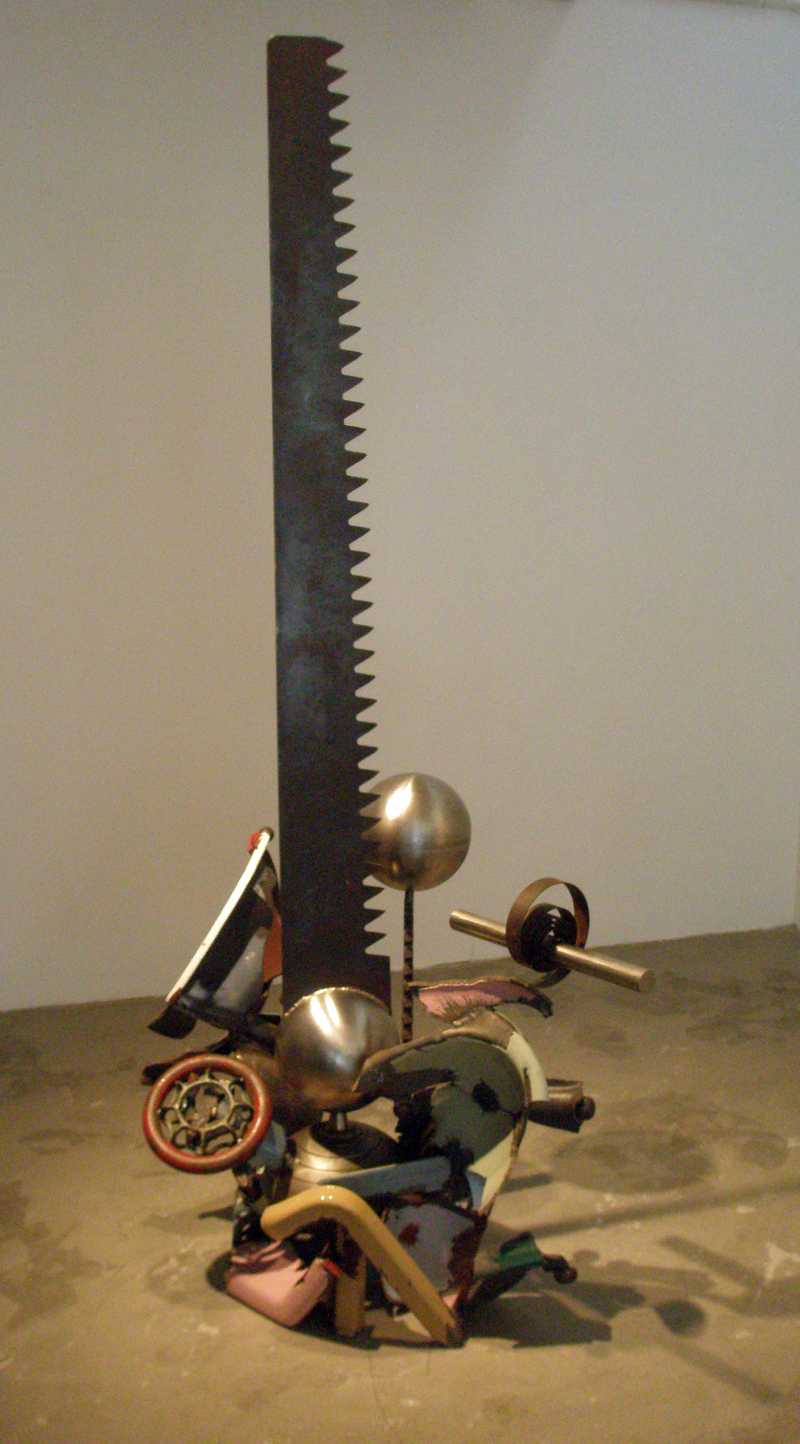
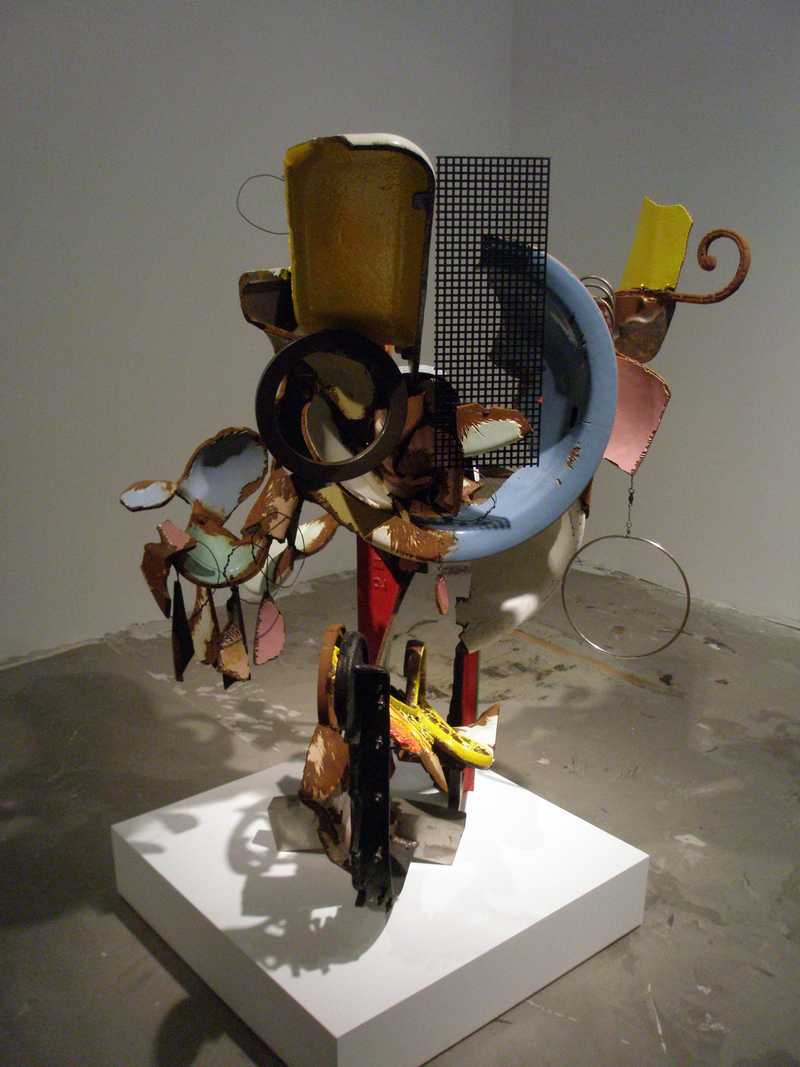

Richard Shaw
Richard Shaw, unlike Hudson, has concentrated on the medium of ceramics throughout his long career. At this point, his work has reached an apogee of technical excellence that has rarely been approached, especially by an independent studio artist unsupported by the resources of an industrial firm. But more interesting than the means employed—in this case, slip casting, hand building, decalomania, hand painting and glazing—is the use he puts them to. His trompe l’oiel still-lifes, all in ceramic, seem to be enigmatic clues to a mysterious disappearance, with open books, scientific specimens, art supplies, crockery, and houses of cards preserved exactly as they were.
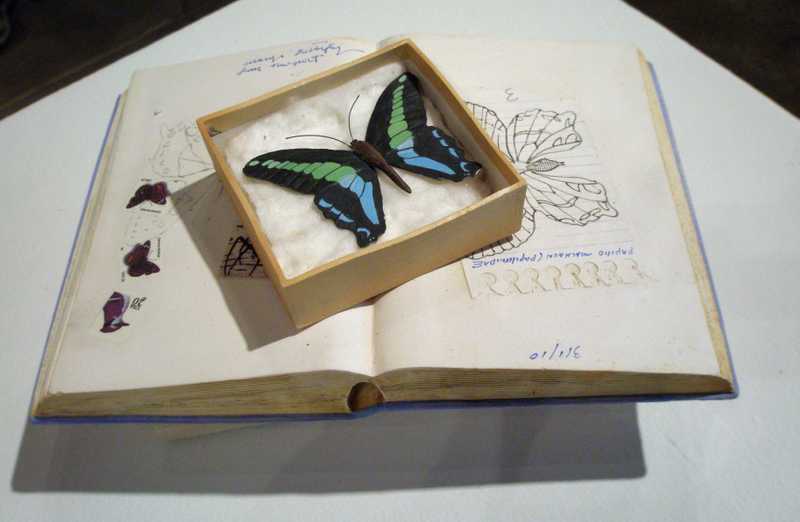
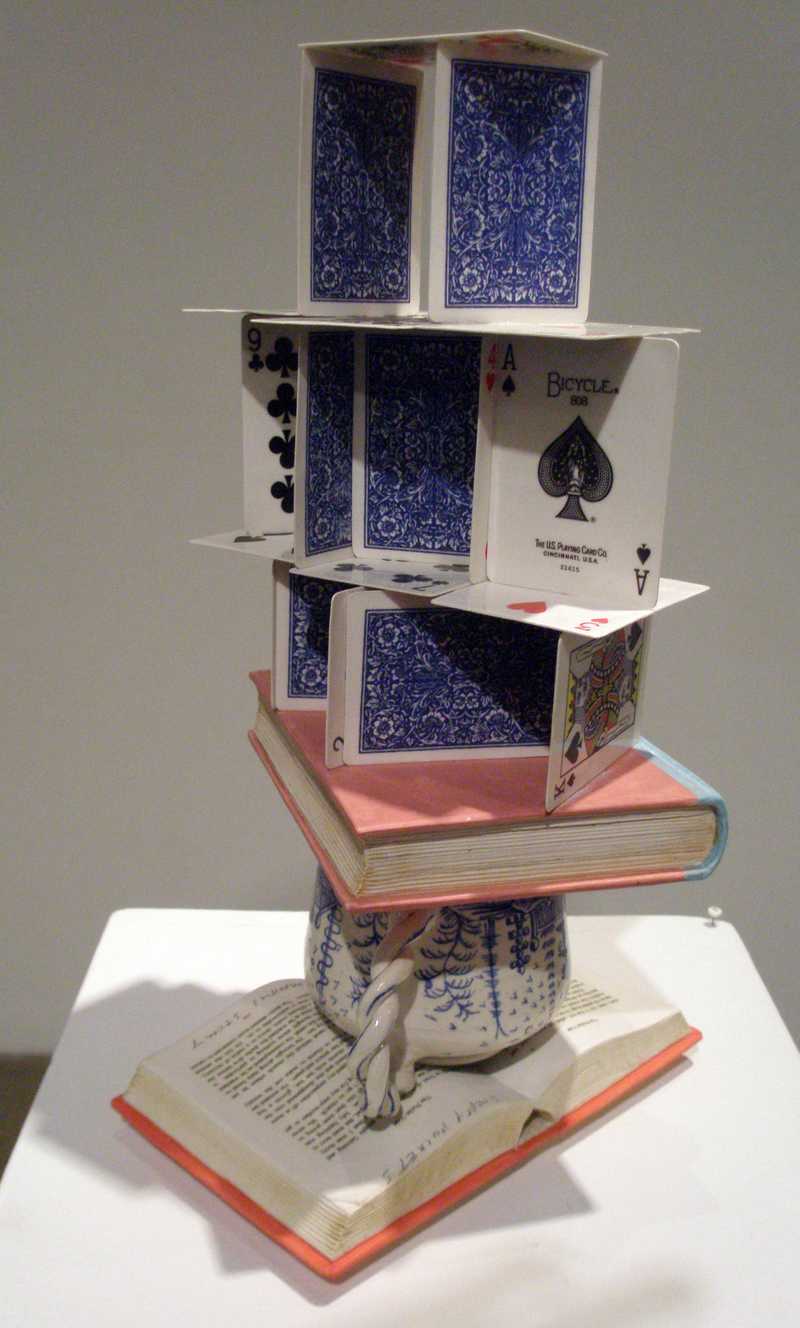
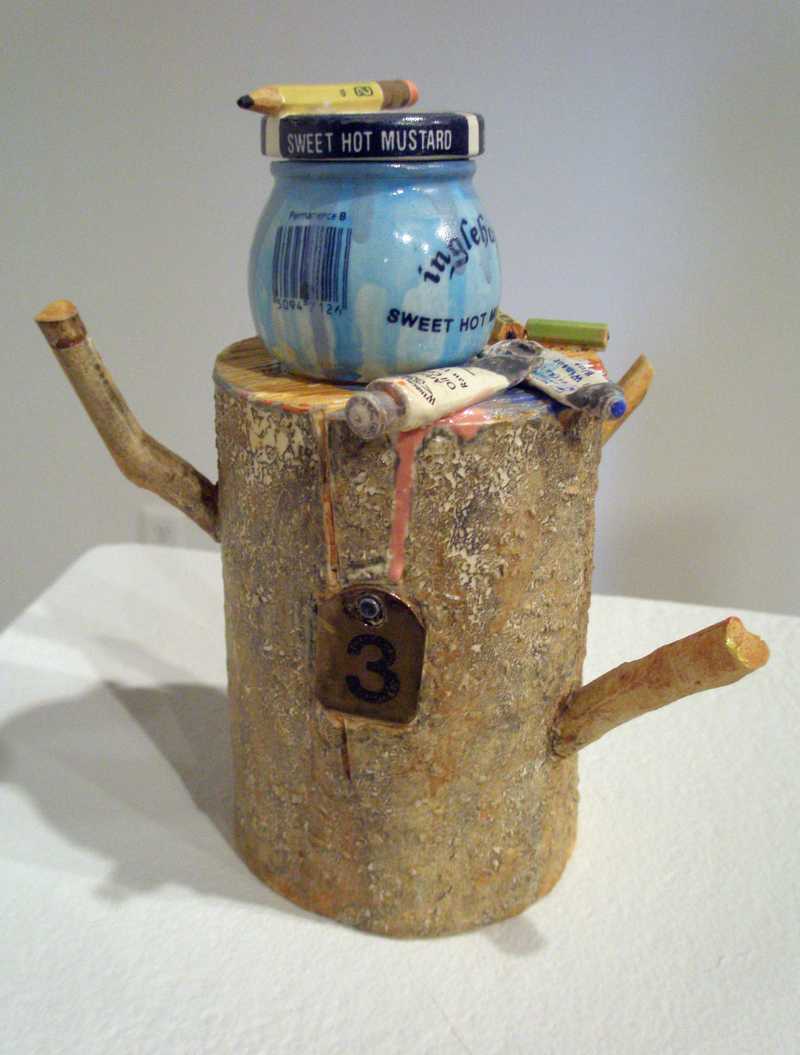
Works by Robert Shaw
Another facet of his work recalls an episode in one of the Oz books (and in the movie “Return to Oz”) where the young heroes, needing to quickly assemble something to rescue them from peril, throw together a strange assortment of household items and sprinkle it with the Powder of Life, upon which it suddenly becomes a living, sentient creature that flies away with them. Shaw’s figurative constructions have that same giddy improvisatory quality, achieved with impeccable craftsmanship that renders these improbable creations immediately convincing, both as the collection of baskets, tin cans, paintbrushes, cigar boxes, sticks, etc. that they appear to be, and as characters with peculiar personalities of their own. Shaw’s new work, full of erudite references, hints of narrative, and evocations of a fantasy world, seems at first to be the polar opposite of Hudson’s raw struggle with obdurate scraps of metal. But at base, they still operate in a similar way, rearranging components that retain past identities of their own into new patterns with meaning to themselves—and maybe even to us. The show, at Braunstein-Quay Gallery’s cavernous space south of Market street, runs through April 17th 2010.
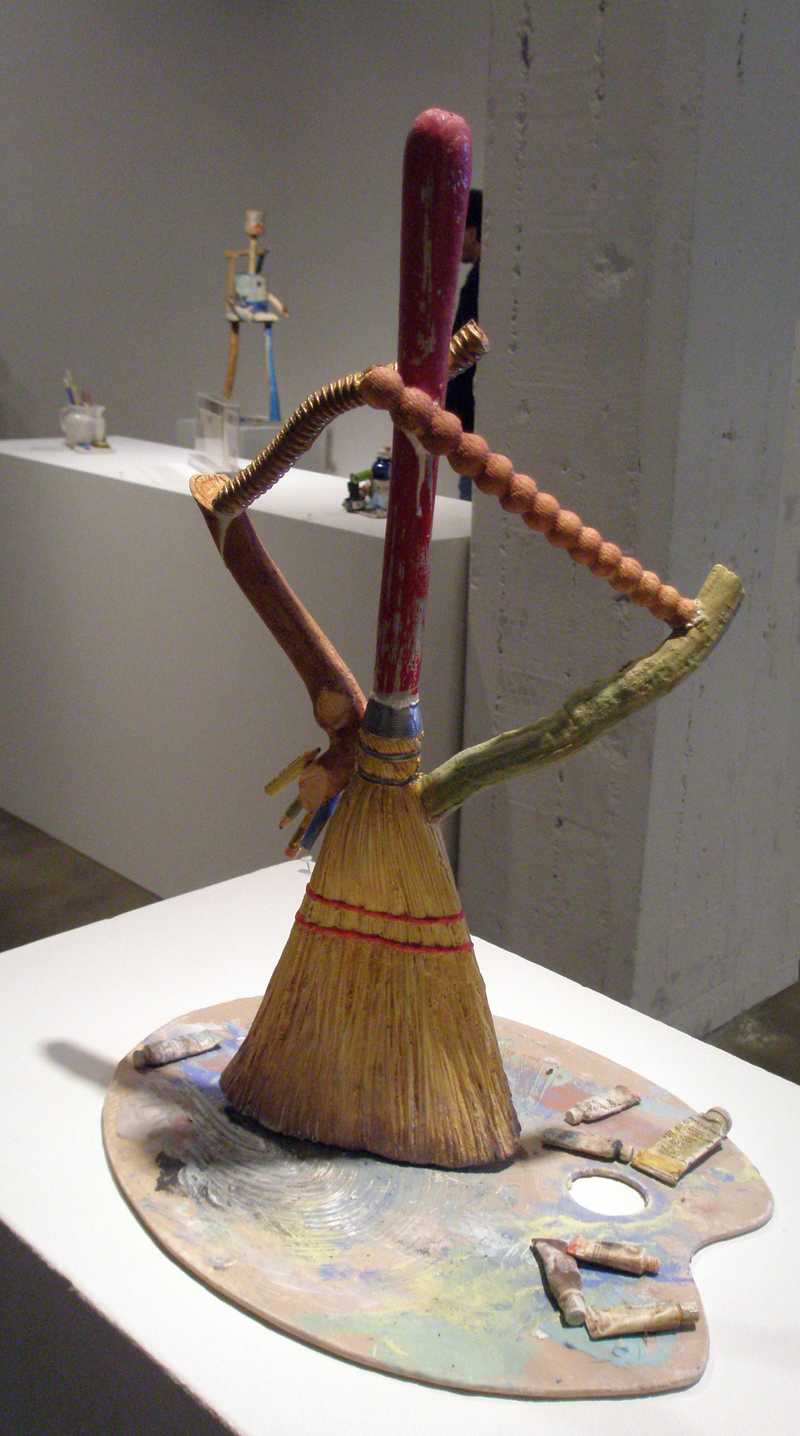
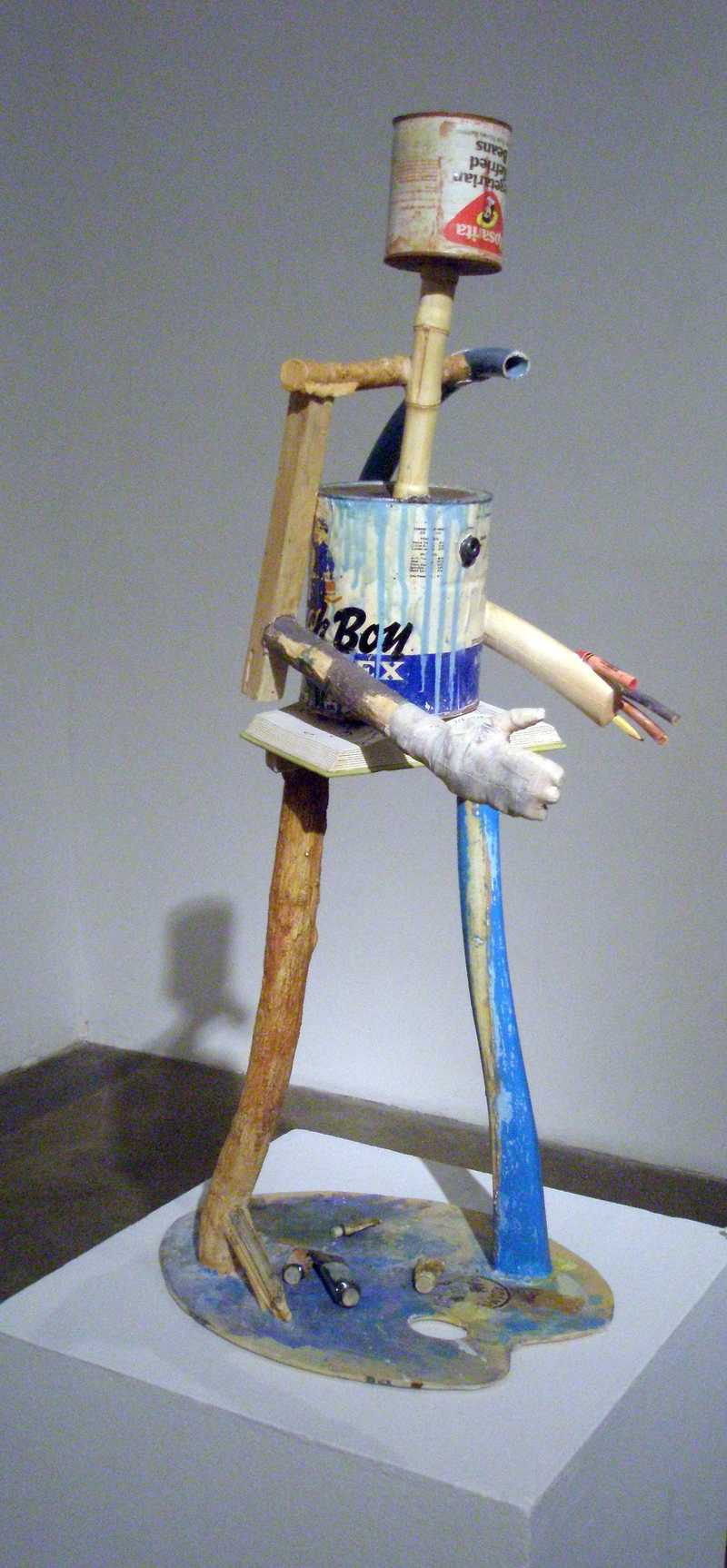
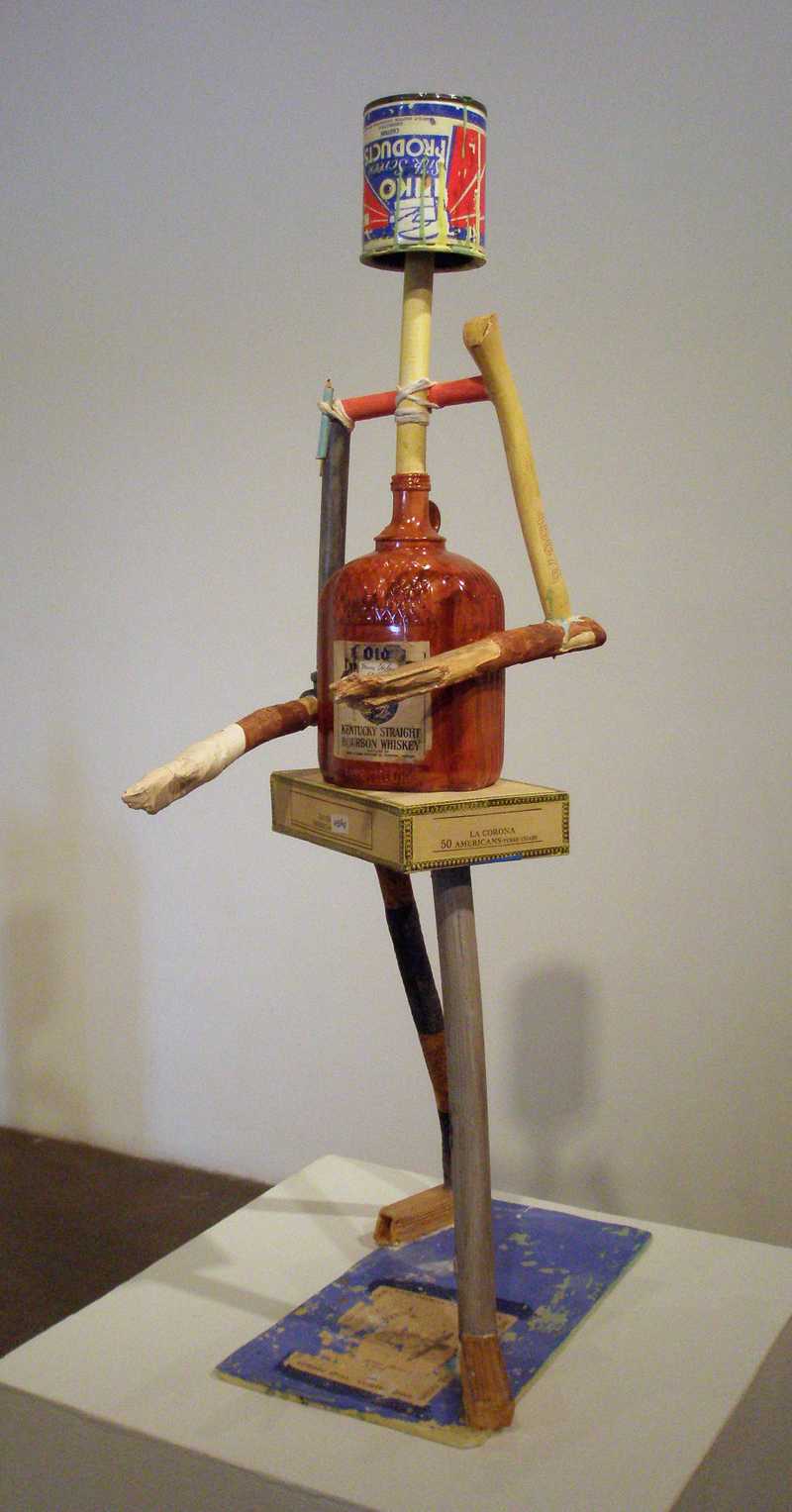

Works by Robert Shaw
Clayton Bailey
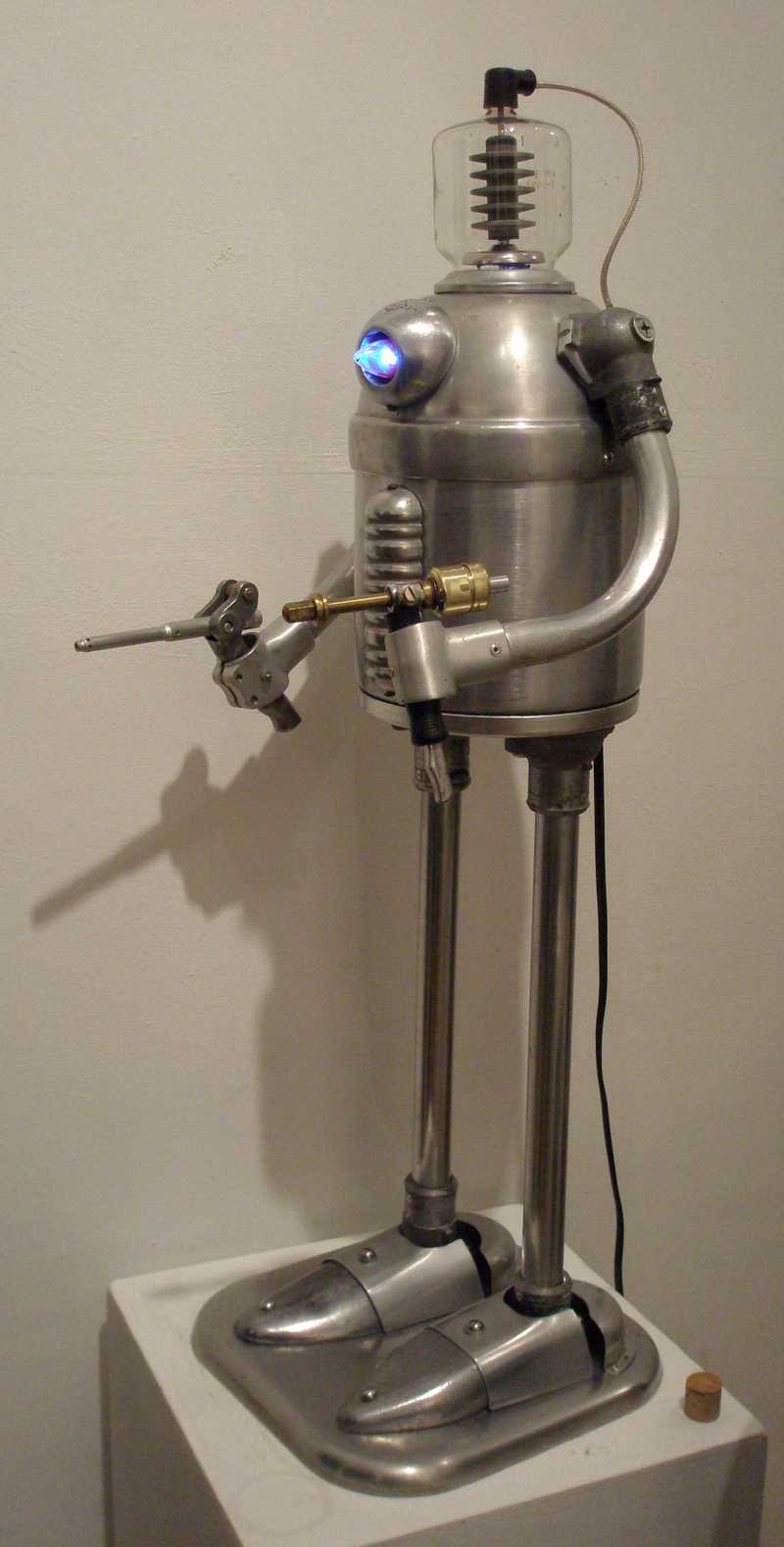
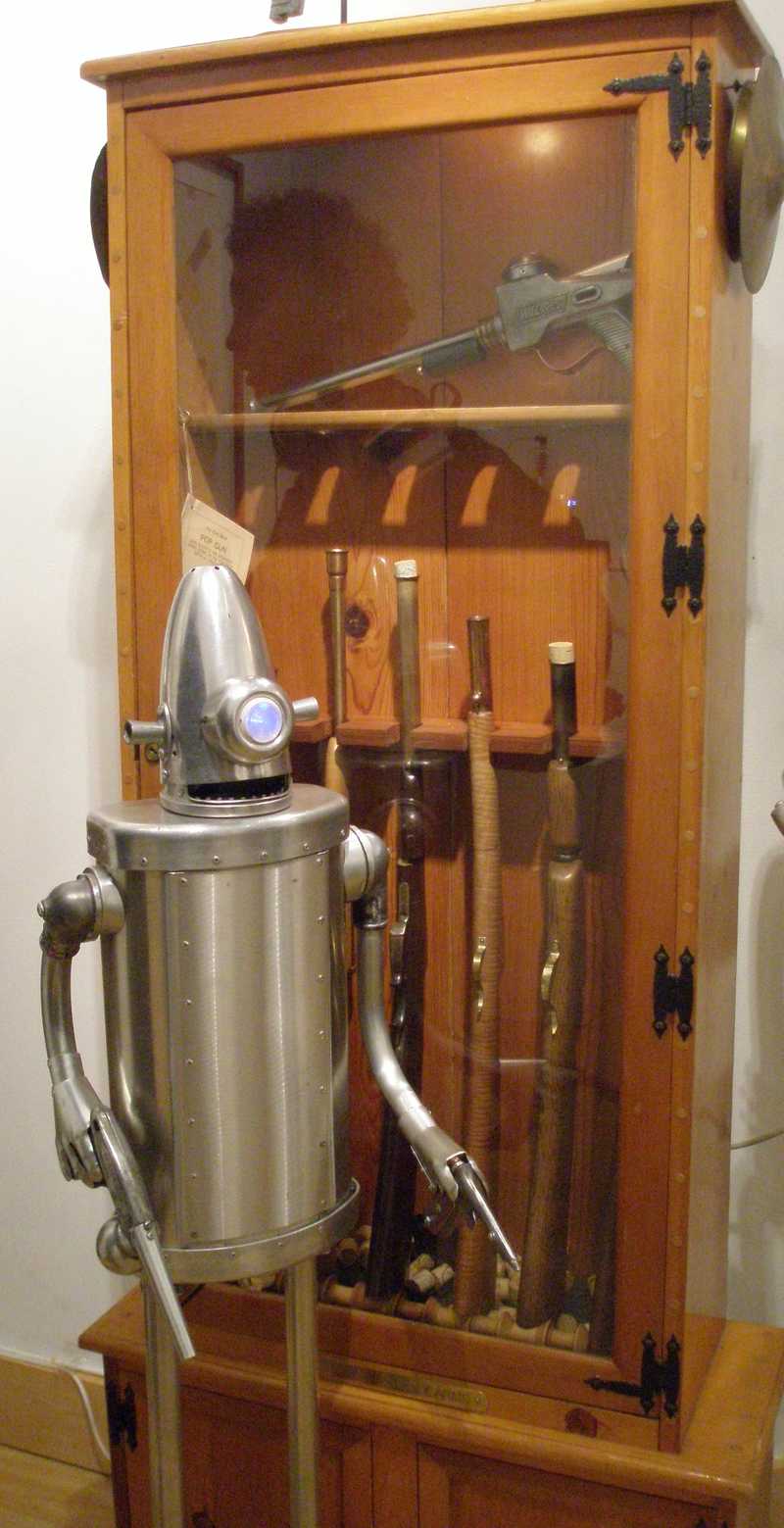
Clayton Bailey is another artist who started out working in clay but moved onto other things, without totally abandoning the ceramic medium. For a while now, he’s been heavily involved in making “robots” from miscellaneous household and industrial cast-offs like coffee-makers, toasters, cylinder heads, lawnmowers, etc. Presumably to furnish them with an appropriate armamentarium, he has branched off into the production of guns made using the same assemblage techniques, most of which actually function; shooting corks with air compressed using an integral slide-action pump. The craftsmanship in these weapons is really excellent—I asked him about that, and he confessed to having taken gunsmithing classes years ago at a vocational high school—lessons he has put to good use. This Gun Show includes a number of variations on the theme of firearms, from ray guns to floor-mounted swivel guns, dueling pistols, rifles with elegant wooden stocks and an ingenious set of backward-pointing guns (cast in ceramic) which promise to stamp out crime by promoting involuntary suicide on the part of the gangsters using them. Several well-armed robots were also in attendance, accompanied by exploding containers marked “explosives” and several charming drawings by the artist’s wife Betty which comment wryly on life in the world of art.
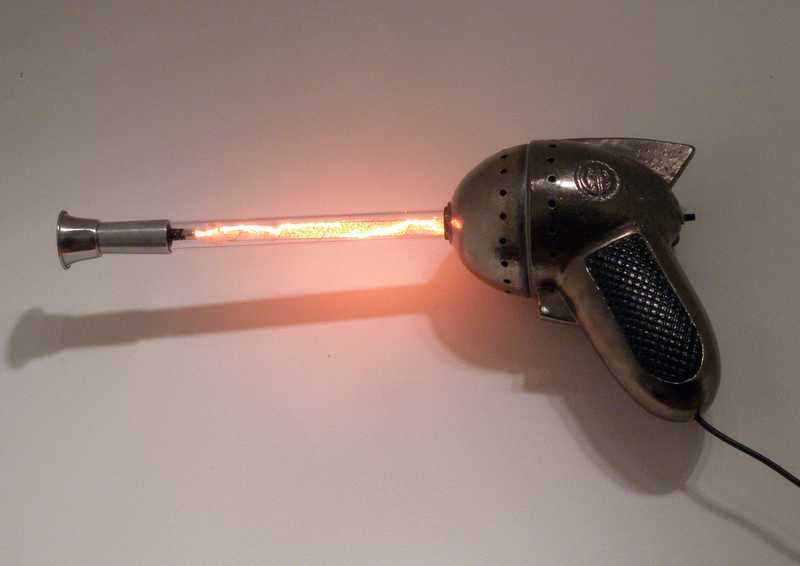
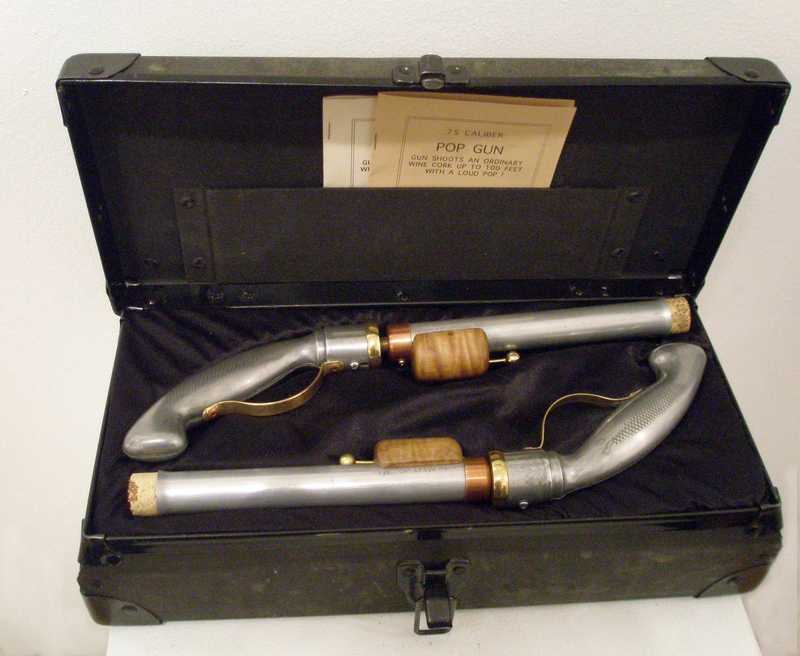

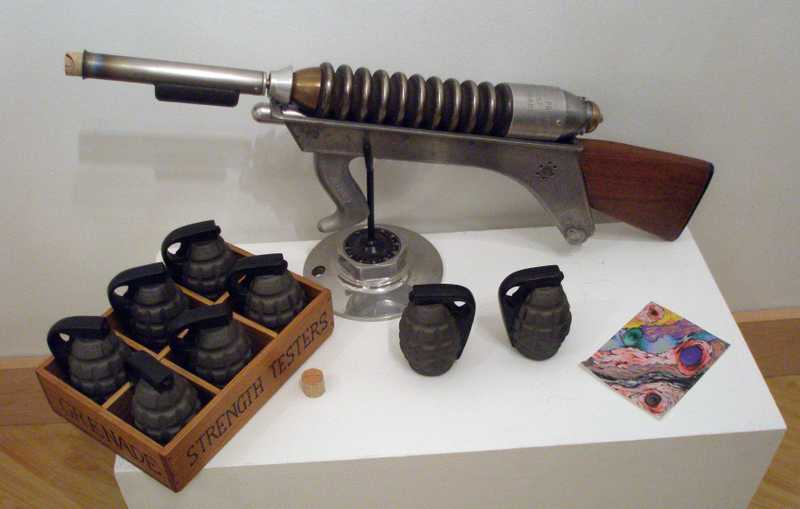
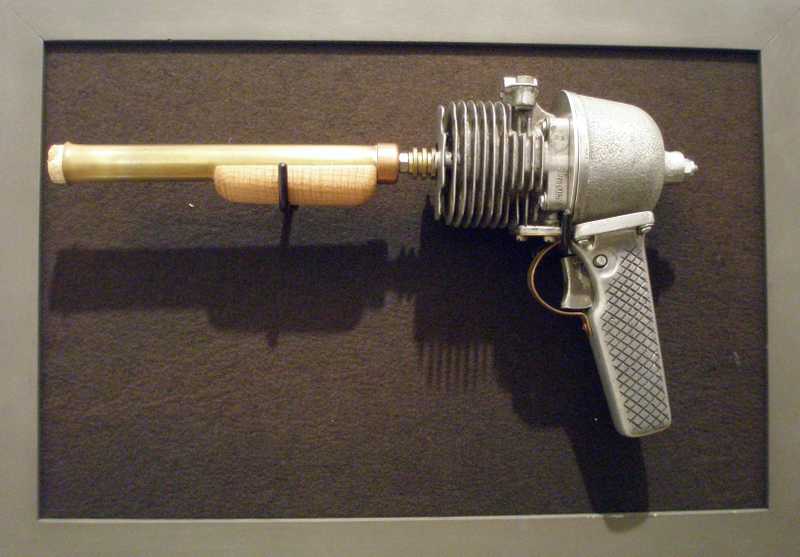
Works by Clayton Bailey
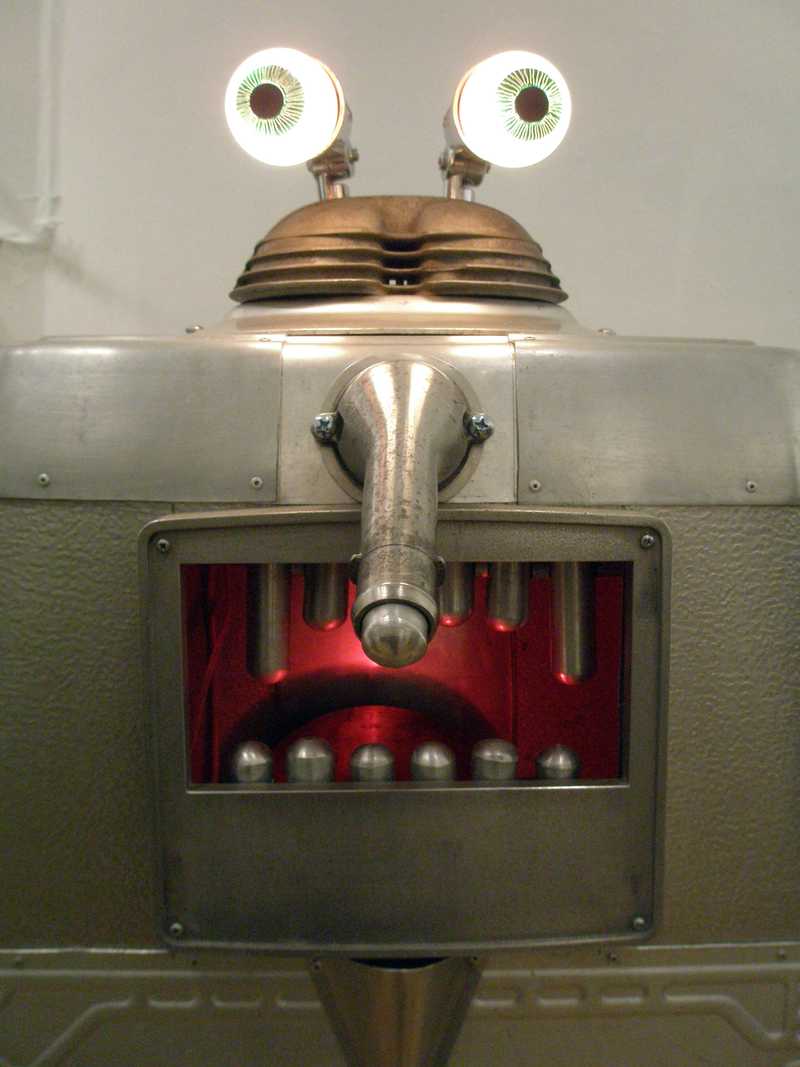
A440 Gallery & Lowell Darling for Governor
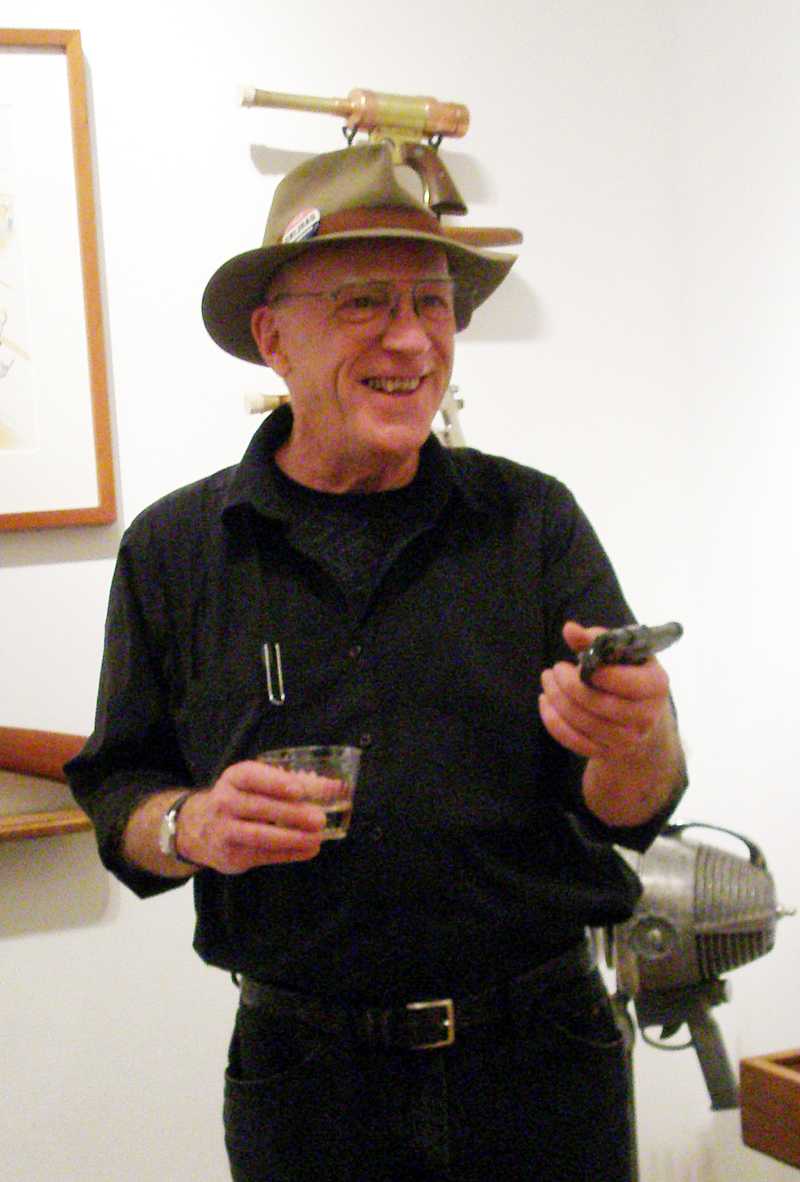
The A440 Gallery is a small venue in a building full of galleries that is well-suited to this show’s intimate scale. At the opening, as well as the artist himself, long-shot California gubernatorial candidate and conceptual artist Lowell Darling was there promoting his “do nothing” pledge (since it’s virtually impossible to accomplish anything in California as long as any spending requires a 2/3 majority, he has vowed to do nothing as governor until that law is repealed—a more honest and realistic stance than anything the front-runners have espoused.) Clayton Bailey and Lowell Darling will be making a joint appearance at the Richmond Art Center in Richmond California (which recently hosted a show of Bailey’s robots) on April 16, 2010 from 5–8 PM — it should be an interesting and amusing evening. One can see more of Clayton Bailey’s work on his extensive website — enjoy!
Andrew Werby